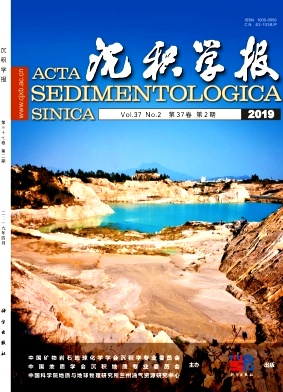Research Advances and Critical Issues of “mixed siliciclastic and carbonate sediments”
doi: 10.14027/j.issn.1000-0550.2018.152
- Received Date: 2018-03-14
- Rev Recd Date: 2018-07-11
- Publish Date: 2019-04-10
-
Key words:
- mixed sediments /
- lithologic classification /
- genetic type /
- sedimentary type /
- controlling factor /
- petroleum geological significance /
- critical issue
Abstract: "Mixed siliciclastic and carbonate sediments" have been a focus in sedimentology during recent years. This paper systematically examines the new research advances of "mixed sediments" in China and abroad and discusses several critical issues at the present stage. The mixed sediment research process can be divided into four stages:1) phenomenal description; 2) basic theory research; 3) research in marine environments; and 4) research in continental and other environments. There are various, but no universal standard, petrographic classifications for the mixed sediments due to different geological settings. The genetic types of mixed sediments generally include punctuated mixing, facies mixing, in situ mixing, and source mixing. The mixing process is actually quite common and can occur in marine environments, freshwater lacustrine basins, and saline lacustrine basins. Consequently, the mixed sedimentary models are varied. The mixing process is generally controlled by siliciclastic supply, climate and water environment, eustatic (lake level) changes, paleogeomorphology features, tectonic forces, and hydrodynamic conditions. Mixed sedimentation is of great petroleum geological significance. Near-source mixed sediments are associated with delta systems, and mixed sediments on underwater uplift far from the source and algal mixed sediments could be excellent lacustrine reservoirs. There are several disadvantages in current mixed sediment research:1) inconformity of lithologic classification schemes; 2) lack of comparison research with outcrops and modern sedimentation; 3) unclarity of the mixing process in the sequence stratigraphic framework; 4) inapplicability of the traditional genetic type on complicated continental mixing processes; and 5) nonidentification of seismic responses of mixed sediments. The recovery of the paleogeographic environment, analysis of sedimentary dynamics, and petroleum exploration by comprehensive and in-depth study on mixed sediments are of great significance.
| Citation: | XU Wei, DU XiaoFeng, HUANG XiaoBo, SONG ZhangQiang, LI ZhengYu. Research Advances and Critical Issues of “mixed siliciclastic and carbonate sediments”[J]. Acta Sedimentologica Sinica, 2019, 37(2): 225-238. doi: 10.14027/j.issn.1000-0550.2018.152 |






 DownLoad:
DownLoad: